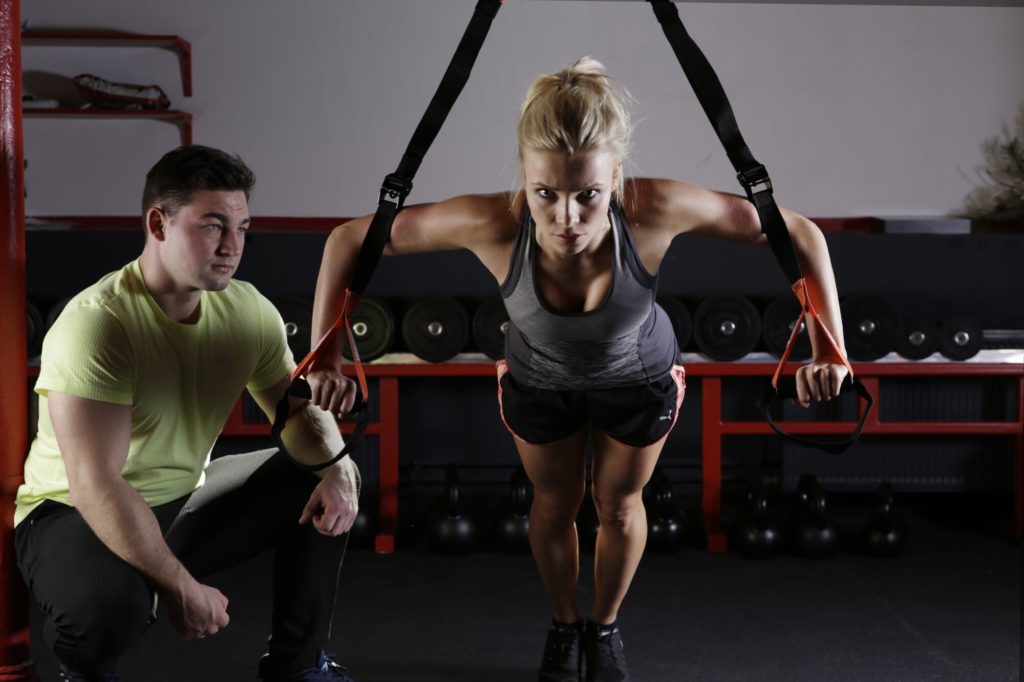
Over 73% of adults in the United States are overweight or obese. While having a small amount of “extra” weight isn’t a cause for concern, being overweight can come with some health risks. Are you trying to lose weight and increase your overall fitness?
If you’re new to weight loss, or you’ve never been successful with it, you might be wondering whether you should try cardio vs. strength training for weight loss. Is one better than the other?
We’re here to help. Keep reading to learn all about whether you should be doing cardio or strength training for weight loss (or both).
Benefits of Cardio
It’s true that when it comes purely to losing weight, cardio is king. Cardio is great for your body and your mind and it doesn’t hurt that it burns a lot of calories.
Cardio doesn’t have to mean running or cycling for miles, so what is cardio?
Cardio is aerobic exercise. This means that you’re using excess oxygen to meet the demands of whatever exercise that you’re doing. You’ll find that, even if you’re lifting heavy weights during a strength training session, you’ll always breathe heavier during a heavy cardio session.
Cardio also has to do with your cardiovascular health. In other words, it’s good for your heart and circulation.
Cardio doesn’t mean that you have to go on long runs or spend all day on the elliptical. You can do low-intensity steady-state cardio, like walking, and it’s even a good idea to pair this with higher-intensity cardio exercises.
Dancing, riding a bike, jumping rope, aerobics, and more are all forms of cardio. If the idea of going for a 5-mile long run and huffing and puffing your way to the finish line doesn’t appeal to you, that’s okay!
You can still take advantage of the benefits of cardio while having fun and staying somewhat within your comfort zone. But what are those benefits?
Burning Calories
The most obvious benefit of doing cardio is that you’ll start burning calories. Even slow cardio will burn calories (though at a much slower rate). When it comes to plain and simple weight loss, cardio is going to help you the most (though you may not target stubborn fat. More on that later).
The number of calories that you burn will depend on how much you weigh, your own exercise history, your muscle mass, and the intensity of your workout. There may be other factors involved as well, but this is a basic guideline.
Check out this calculator for calories burned while running as an example. You’ll notice that someone who weighs 200 lbs will burn more calories doing the same intensity and length of exercise as someone who weighs 150 calories. This is because the person who weighs more is technically putting in more effort (even if it doesn’t feel that way).
You can burn more calories in a shorter amount of time by doing high-intensity cardio as compared to high-intensity strength training. If your only goal is losing weight, cardio is the way to go.
Heart Health
Cardio is fantastic for your heart. Even if you weren’t trying to reach weight loss goals, you would want to do cardio at least twice per week (preferably more) to maintain your overall heart health.
When you do cardiovascular exercise, you improve the blood flow to and from your heart. You may reduce the prevalence of fatty deposits so it’s easier for your blood to get where it needs to go.
Cardio may reduce your risk of heart disease, so if you’re someone with a family history of heart problems, it’s a good idea to incorporate cardio into your workout routine even if you prefer other forms of exercise.
Improving Your Lung Health
All exercise is going to put a (generally positive) strain on your lungs, but cardio is the most effective for improving your overall lung health.
When you do cardio, you’re forcing your lungs to work harder to get oxygen into your body. Over time, your body gets better at transporting oxygen into your bloodstream (even when you aren’t exercising). While you need to maintain an exercise routine to keep those results, you’ll continue reaping the benefits long-term even with steady-state cardio.
Keep in mind that if you have lung problems, it’s important to know your limits and speak to your doctor about safe exercise progressions.
Benefits of Strength Training
So what about strength training? We already mentioned that cardio is king when it comes to pure calorie burning during an exercise session, so why would you bother with strength training at all?
Strength training is any exercise that focuses on building muscle. It can be something traditional, like lifting weights at the gym, or it can be something more unique.
Fun activities like rock climbing, pole fitness, and even intense pilates are good for building muscle, so if the idea of lifting heavy objects and putting them back down sounds like torture, that’s okay!
Strength training also improves your cardiovascular health, so don’t be fooled by the benefits of cardio. It won’t be as effective, but you’ll still get your heart pumping while you’re working out.
You’ll also still burn calories. When you have a heavy weightlifting (or other strength training) session, you can expect to burn hundreds of calories, but it may be less than equivalent-intensity cardio (though you may be able to push yourself for longer sessions, so it may even out).
So what are the other benefits of strength training that make it worthwhile?
Muscle Growth
The most obvious benefit of strength training is that you’ll grow more muscle.
This doesn’t mean that you’re going to get “bulky.” Many people (primarily women) worry that by strength training, they’re going to get large and obvious muscles. This isn’t really true.
Extreme muscle growth requires a huge amount of commitment, a strict diet (with a caloric surplus), and often, performance enhancers. For the majority of people, getting “bulky” by accident is impossible.
You will gain muscle and you might even gain weight in a caloric surplus, but a lot of that weight will be muscle mass instead of fat.
If you want to be stronger, strength training is the way to go!
Metabolism Boost
There’s evidence to suggest that consistent strength training will improve your metabolism (at least by a small amount). This doesn’t mean that you’ll be able to forgo a healthy diet or skip the gym more often and get the same results, but it will make a difference.
The difference gets slightly greater if you’re gaining muscle weight. The more you weigh, the more calories you burn.
Looking “Toned”
When people say that they want to “lose weight,” what they usually mean is that they want to lose fat. While these are similar concepts, they’re not the same.
When you only strive to lose weight, it’s likely that you will lose a lot of fat. If you’re not working on strength training, however, you may end up looking “skinny fat” because there’s no muscle tone underneath.
If you want rockin’ abs and strong-looking shoulders, you need to do strength training. This is how you get the “lean” look.
Overall Improved Functionality
Strength training isn’t just for aesthetics. While it’s okay to have aesthetic goals (like weight loss), strength training will help you in all areas of your life. Overall, you’ll be a more functional person.
When you deadlift, you prepare yourself to lift objects off the floor in your day-to-day life. Are you planning a big move anytime soon? You’ll have an easier time lifting boxes and heavy furniture.
You’ll also improve your ability to do your cardiovascular exercises. Consider how much easier it will be to run when you have stronger legs and a stronger core. Your balance and agility will be far better than they would be otherwise.
Can You Just Rely on Cardio?
Based on this information, it’s important to note that you can’t rely exclusively on cardio for your fitness goals unless your only intention is to lose fat. Cardio can be effective, but for most people, basic steady-state cardio won’t give you the body that you’re looking for.
Some “cardio” exercises, like kickboxing, will also improve your muscle tone substantially, but not as much as conventional strength training.
In short, we recommend doing both types of exercise. Cardio for weight loss as a whole and strength training for fat loss and functionality.
You can do cardio and strength training on the same days if you like, or you can split them up. Many people choose to do strength training two to three times per week and balance that out with two to three days of cardio. Others prefer to do brief cardio sessions before strength sessions (which is effective if you’re short on time).
You can also incorporate HIIT (high-intensity interval training) which is a great blend of cardio and strength training (depending on what you do). It’s great for maintaining muscle mass and improving explosive strength through high-intensity plyometric exercises.
HIIT is also fantastic for anyone who’s crunched for time. It shouldn’t take you more than 20 minutes (maximum) to get a full and exhausting workout in.
What Else Should You Do?
Losing weight isn’t all about strength training or cardio. If you want to maximize fat loss and get yourself into the best shape possible, you’re going to want to incorporate a few more things into your routine.
This isn’t to say that strength training and cardio won’t be effective on their own, but you’ll have a slower weight loss process and you may find it easier to plateau. Here are a few things that you should be doing alongside your exercise routine.
Plenty of Rest
Believe it or not, rest is one of the most important things to do when you’re trying to lose weight. You need to give your body time to recover.
Over-training is tempting when you’re a newbie. You want to lose weight as fast as possible, so that means that you should work out as often as possible, right?
Wrong. If you over-train, you can end up injuring yourself or plateauing. If you plateau or get injured, you’re going to lose progress.
Make sure that you have at least one rest day per week. This doesn’t have to be a complete rest day (more on that later), but you should avoid putting excess strain on your body.
A Healthy Diet
Abs are made in the kitchen, or so they say. If you want to lose weight, you’re going to have to get your diet in check.
For the most part, “calories in vs. calories out” is a safe rule to go by. When you eat more calories than you expend, you’ll gain weight. If you’re strength training, some of this weight will be muscle.
When you eat fewer calories than you expend, that’s called a caloric deficit. You’ll lose weight. Make sure you don’t drop your calories too low, however, or you may damage your metabolism.
Even a caloric deficit of 100 calories per day will make a difference.
Focus on healthy and filling foods. You can still have treats, but try to use the 80/20 method (80% nutritious and 20% “fun”). We recommend making sure that you’re getting plenty of protein and fiber.
Recovery and Flexibility Exercises
On a rest day, you can still do mild exercise. Slow steady-state cardio is great for this, but you can also incorporate flexibility exercises like yoga.
When you do yoga on a rest day, you’ll improve your strength, balance, and flexibility without putting too much strain on your body. This will make your “real” workouts easier and it will improve your overall health.
Cardio vs. Strength Training for Weight Loss: Do Both
When it comes to doing cardio vs. strength training for weight loss, the most logical answer is to do both. Cardio is fantastic for your heart and it will help you burn the most amount of calories in the shortest time, but strength training will give you serious muscle tone, make you more functional, and boost your metabolism over time.
Are you ready to start your fitness journey? Contact us at Results Fitness and try a free pass today!

